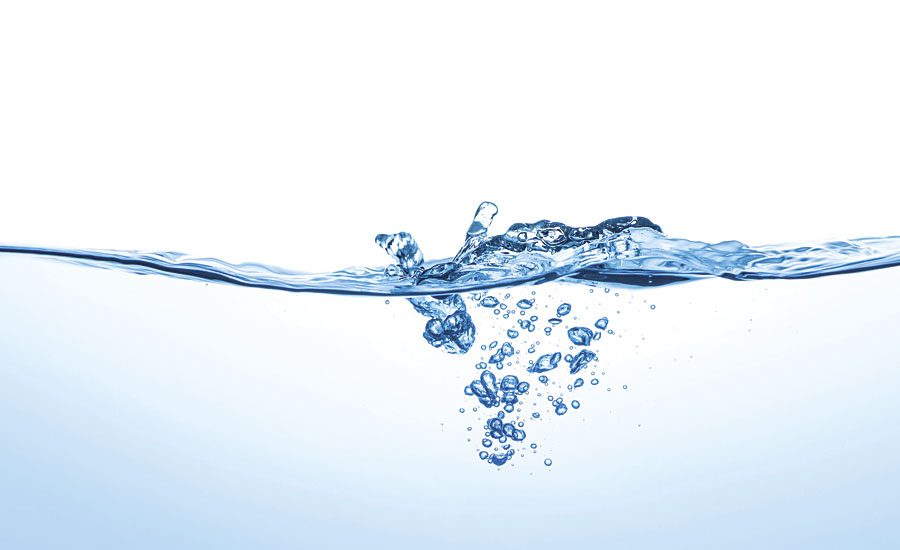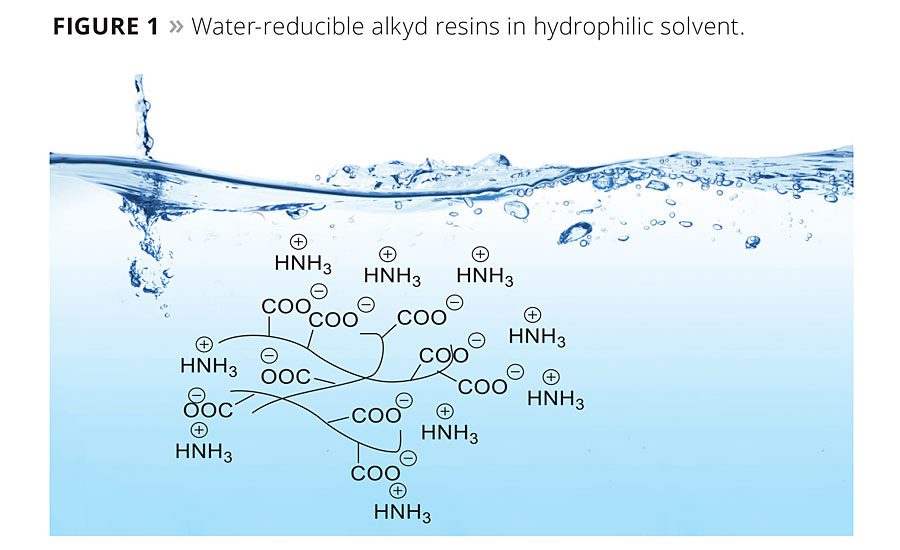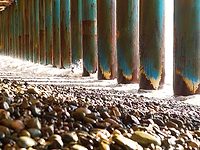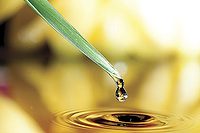Advancing Alkyds
Novel Dispersion Technology Pushes Waterborne Performance to New Levels


















In the ongoing shift from solvent- to water-based coatings, alkyds have stubbornly resisted the change, and for valid reasons. Solvent-based alkyds are cost efficient and versatile, with a long history of proven performance in architectural, industrial and specialty applications. They offer excellent adhesion, hardness, gloss and corrosion resistance. These resins are also highly viscous: they originate as solids, making it very difficult to formulate shelf-stable coatings without the addition of solvent. Despite numerous options, including water-reducible alkyds, modified alkyd dispersions and alkyd emulsions, only 10% of alkyd-based coatings are currently waterborne.1 Challenges to widespread adoption include delayed hardness development, lower gloss and reduced corrosion protection. To help formulators bridge the performance gap and produce differentiated products in this space, Dow Coating Materials has developed a novel dispersion technology that can be used to formulate waterborne alkyds that can perform as well as or better than solventborne versions.
If It Ain’t Broke?
With an estimated annual value of $25 billion USD, alkyds are among the most widely used binder chemistries for paints and coatings.2 In architectural applications, they are a go-to option where low cost and high gloss are desired. On metal substrates, they offer excellent adhesion, corrosion resistance and gloss. Although solventborne options dominate in this binder category, accounting for approximately 60%, or 3 billion pounds, of annual consumption,3 a Voice of the Market Study suggests that most formulators would prefer waterborne options.4 Compared to their solventborne counterparts, waterborne coatings offer lower VOC capability, improved personal safety, soap-and-water clean-up and easier disposal. So what’s holding waterborne back? Current options fall into one of three categories.
As illustrated in Figure 1, water-reducible alkyd resins incorporate excess acid groups and are neutralized with amines for water dispersibility. Because they are supplied in hydrophilic solvent, VOC levels are only marginally lower compared to solventborne alkyds (240-360 g/L vs. 450-650 g/L). In addition, shelf life after reduction in water is very short due to ester hydrolysis. This can lead to loss of molecular weight and a resulting loss in final film performance.
Modified alkyd dispersions, by contrast, incorporate an acrylic shell around an alkyd core, which protects ester linkages from hydrolysis; the resin is neutralized with an amine for water dispersibility (Figure 2). This design allows for VOC levels of <100 g/L. However, during modification a considerable amount of high-acid-value impurities are generated, which results in reduced corrosion protection compared to solventborne alkyds.
Alkyd emulsions, shown in Figure 3, are a third type of waterborne alkyd. They are stabilized with anionic/nonionic surfactants and can go as low as zero VOC; however, the high level of surfactant required (5-10%/wt) to stabilize the emulsion can affect shelf stability and leads to water sensitivity in the final film due to surfactant migration. Reduced water resistance and corrosion protection are common performance trade-offs.
How To Fix It
In contrast to the three commercial options described above, BLUEWAVE™ dispersion technology developed by Dow is a solvent-free system that requires no polymer modification and little or no surfactant. These key factors enable waterborne alkyd coatings with performance similar to existing solventborne coatings, but at near-zero VOC levels. As demonstrated in Figure 4, a waterborne alkyd probe developed with BLUEWAVE technology performed well above a commercial waterborne alkyd and delivered exceptional, improved corrosion resistance compared to a commercial solventborne alkyd. The waterborne alkyd probe also delivered higher gloss than the commercial waterborne alkyd and was comparable to the solventborne alkyd. Details of the waterborne alkyd probe and test formulation are provided in Tables 1 and 2, respectively.
How the Technology Works
BLUEWAVE dispersion technology employs a continuous, solvent-free mechanical dispersion process coupled with the application of advanced interfacial and formulation science. As illustrated in Figure 5, continuous high-shear mixing creates a high internal phase emulsion (HIPE), which is subsequently let down via the addition of water. The novel and proprietary process delivers a controlled particle size and high percent solids in a shelf-stable emulsion of highly viscous resins without the need for solvent, hydrophilic modification or high levels of surfactant.
Why It Is Different
The majority of waterborne alkyds on the market today employ a low-molecular-weight alkyd and rely on hydrophilic modification and/or high levels of solvent to manage viscosity. Shelf stability is maintained via high levels of surfactant or neutralization in high acid content. All of these factors can detract from the performance of the final film.
This new technology, by contrast, does not require increased surfactant loading or high acid values; it does not require hydrophilic modification or low molecular weight; and it is solvent-free. All of these factors contribute to a higher performing film and very low VOC levels. As demonstrated in Table 3, waterborne alkyd coatings enabled by BLUEWAVE technology are <5 g/L VOC and offer a good balance of properties and equivalent or better corrosion protection compared to commercial solventborne alkyds, as well as better corrosion protection and gloss compared to commercial waterborne alkyds.
Summary
Extensive testing demonstrates that BLUEWAVE dispersion technology enables waterborne alkyds that offer a performance level significantly exceeding currently available waterborne alternatives and equal to – and in some cases better than – solventborne alkyds. Formulators can use this technology to produce waterborne alkyd coatings that offer excellent stability/shelf life, rapid hardness development, high gloss and excellent corrosion resistance. In addition, this solvent-free technology minimizes the need for surfactant and other additives, helping to keep final coating formulations down to 10 g/L VOC or less. The technology also is compatible with medium- and long-oil alkyds and a wide range of molecular weights.
References
1 ISH Chemical Estimates, SRI Alkyd Surface Coatings 2013.
2 ISH Chemical Estimates, SRI Alkyd Surface Coatings 2013.
3 ISH Chemical Estimates, SRI Alkyd Surface Coatings 2013.
4 SpecialChem Voice of the MarketStudy 2011.
Aknowledgement:
Additional contributors to this article include Venessa Williams, Bob Bills, Christina Ellison, Jaime Sullivan, Marty Beebe, Rebecca Ortiz, Jay Romick and Daryoosh Beigzadeh, Dow Coating Materials.
Looking for a reprint of this article?
From high-res PDFs to custom plaques, order your copy today!
















